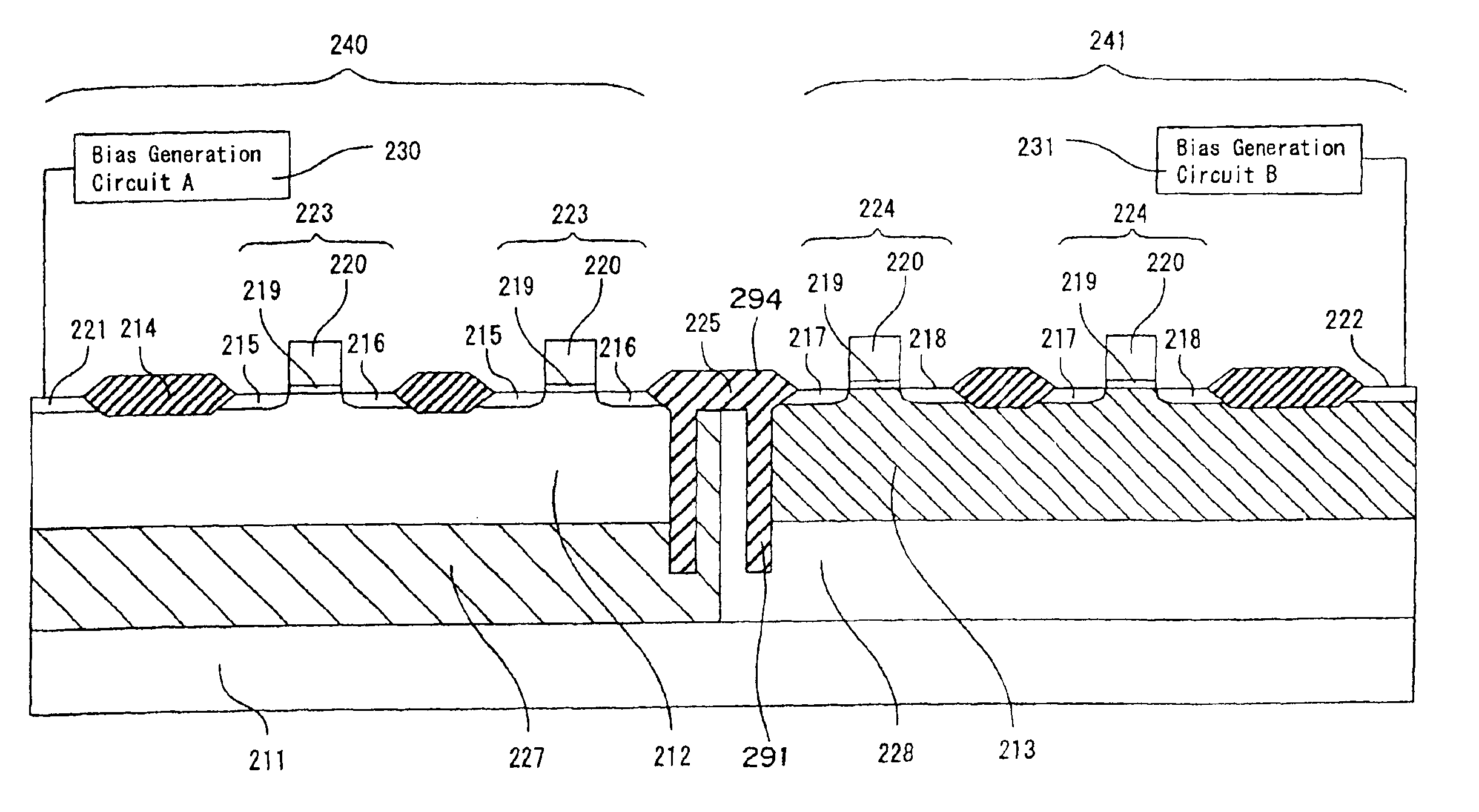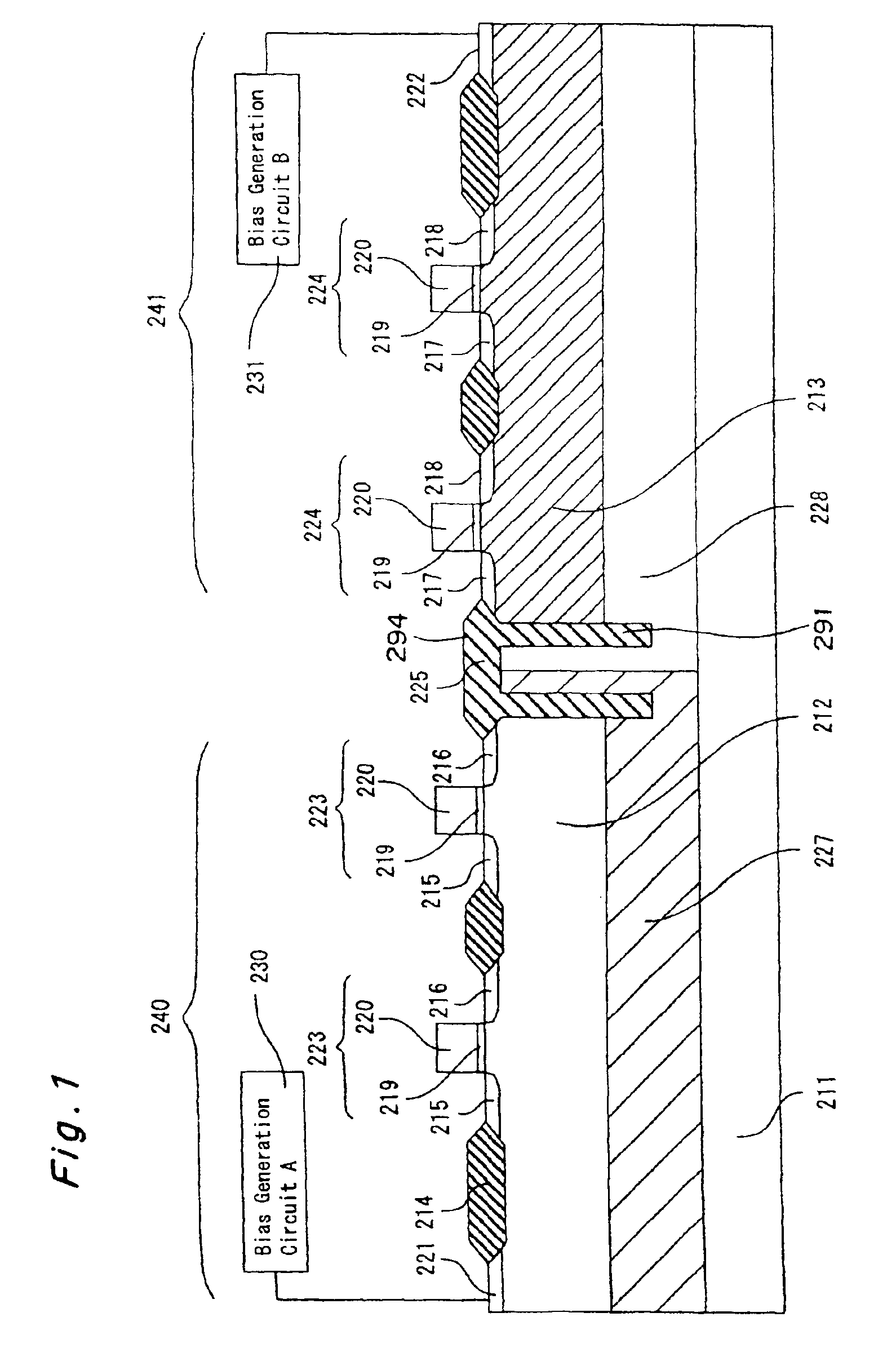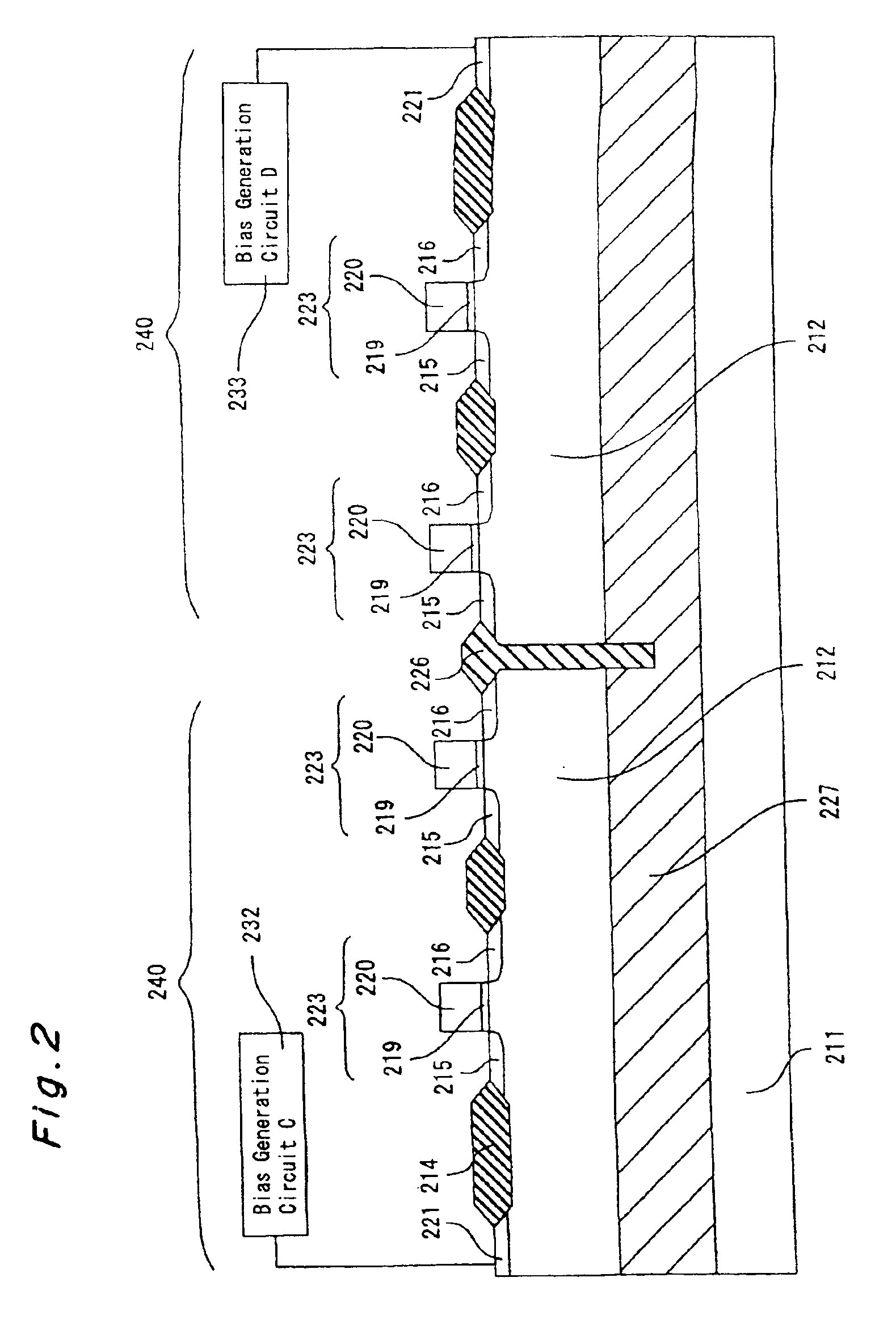Semiconductor device and its production method
a semiconductor and production method technology, applied in the direction of semiconductor devices, electrical appliances, transistors, etc., can solve the problems of increasing the diffusion distance of dopants, increasing the crystal defect, and increasing the leakage current, so as to simplify the manufacturing method of semiconductor devices, easy removal with ashing process
- Summary
- Abstract
- Description
- Claims
- Application Information
AI Technical Summary
Benefits of technology
Problems solved by technology
Method used
Image
Examples
embodiment 1
Embodiment 1 of the present invention is described with reference to FIGS. 1, 2, 3A, 3B, 3C, 3D, 3E, 3F and 4.
FIGS. 1 and 2 are schematic view each showing a cross section of a semiconductor device according to Embodiment 1 of the present invention. FIG. 1 shows a basic circuit block 240 composed of N-type substrate-bias variable transistors 223, 223, . . . , a basic circuit block 241 composed of P-type substrate-bias variable transistors 224, 224, . . . , and boundaries of these blocks. FIG. 2 shows two basic circuit blocks 240, 240 each composed of N-type substrate-bias variable transistors 223, 223, . . . , and a boundary of these blocks.
In the semiconductor device of this Embodiment 1, as shown in FIG. 1, an N-type deep well region 227 and a P-type deep well region 228 are formed in a semiconductor substrate 211.
A P-type shallow well region 212 is formed in the N-type deep well region 227. An N-type source region 215 and an N-type drain region 216 are formed in the P-type shallo...
embodiment 2
Embodiment 2 of the present invention is described with reference to FIGS. 5, 6A, 6B, 6C, 6D, 6E, 6F, 7A, 7B, 8, 9A, 9B, 9C, 9D and 9E.
FIG. 5 is a schematic view of a cross section of a semiconductor device which is Embodiment 2 of the present invention, showing a basic circuit block 240 composed of N-type substrate-bias variable transistors 223, a basic circuit block 241 composed of P-type substrate-bias variable transistors 224 and a boundary of these blocks.
The semiconductor device of this Embodiment 2 differs from the semiconductor device of the foregoing Embodiment 1 in the structure of the device isolation region. More specifically, the device isolation region of this Embodiment 2 is composed of two types of device isolation regions different in depth from each other, the shallower device isolation region being formed of STI (Shallow Trench Isolation).
Substrate-bias variable transistors 223 or 224 present within one basic circuit block 240 or 241 are isolated from each other b...
embodiment 3
Embodiment 3 of the present invention is explained with reference to FIG. 10 as follows.
FIG. 10 is a schematic view of a cross section of a semiconductor device which is Embodiment 3 of the invention, showing a basic circuit block composed of N-type substrate-bias variable transistors 326, a basic circuit block composed of P-type substrate-bias variable transistors 325, an N-type DTMOS 327, a P-type DTMOS 328 and boundaries of these.
In the semiconductor device of this Embodiment 3, an N-type deep well region 312 and a P-type deep well region 313 are formed in the semiconductor substrate 311.
A P-type shallow well region 315 is formed in an N-type deep well region 312. An N-type source region 317 and an N-type drain region 318 are formed on the P-type shallow well region 315. Also, a gate electrode 324 is formed via a gate insulator 323 on a channel region between the N-type source region 317 and the N-type drain region 318, by which an N-type substrate-bias variable transistors 326 a...
PUM
 Login to View More
Login to View More Abstract
Description
Claims
Application Information
 Login to View More
Login to View More - R&D
- Intellectual Property
- Life Sciences
- Materials
- Tech Scout
- Unparalleled Data Quality
- Higher Quality Content
- 60% Fewer Hallucinations
Browse by: Latest US Patents, China's latest patents, Technical Efficacy Thesaurus, Application Domain, Technology Topic, Popular Technical Reports.
© 2025 PatSnap. All rights reserved.Legal|Privacy policy|Modern Slavery Act Transparency Statement|Sitemap|About US| Contact US: help@patsnap.com



